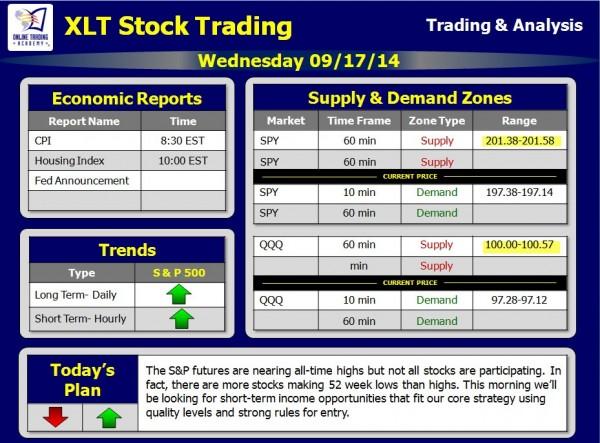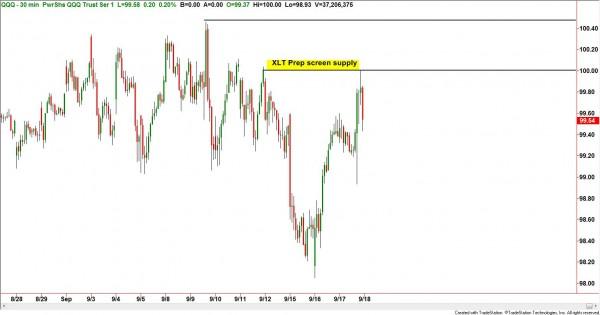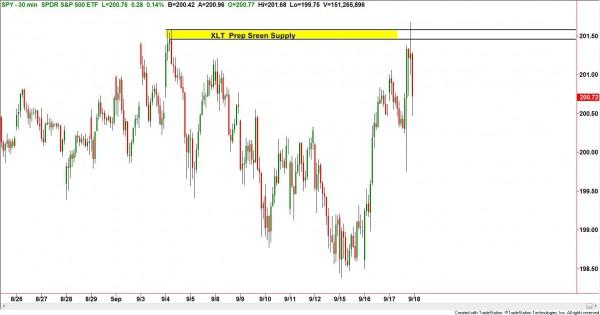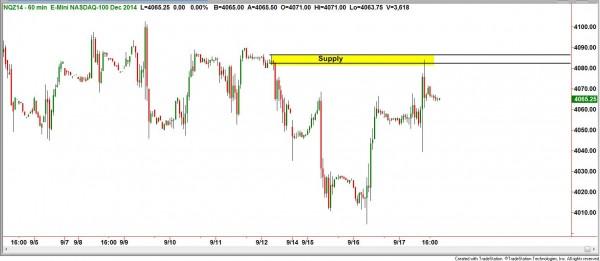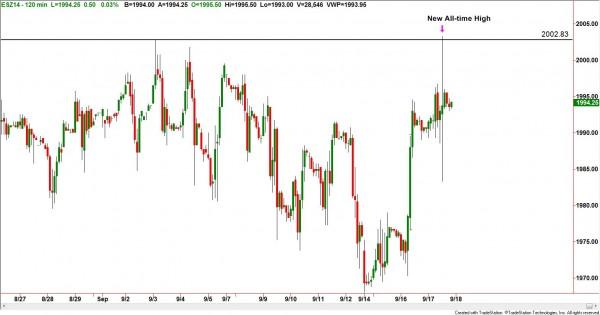Over the last fifteens year or so, the financial product known as the Exchange Traded Fund has grown immensely in popularity, and for good reason. ETF’s, as they are commonly referred to on Wall Street are closed end funds, meaning that they are pools of money that are put together with a specific mandate. In the example of the SPY, the most popular and liquid ETF, the objective of the fund is to match the returns of the cash S&P 500 by continuously managing a portfolio to match the index. These funds are closed ended because after the initial investors pooled their money, these funds no longer accept new money. This allows them to trade exactly like a stock, with the major difference being that an ETF is designed to track a broad based equity index or commodity. Although there are literally thousands of ETF’s to choose from, the two most popular ETF’s (and thus most liquid) of the index funds are the SPY, which track the S&P 500, and the QQQ whose mandate is to mimic the Nasdaq 100, an index comprised of the biggest stocks in the Nasdaq.
ETF’s are a great alternative to stocks in accounts where Futures contracts are not permitted to be traded, or where leverage is not appropriate. Because ETF’s track a broad index, they tend to mitigate the gap risk associated with stocks. Even when this may be the case, the futures markets are a very good odds enhancer in trading the ETF’s because the futures often tend to lead, and they trade continuously throughout the night.
On Wednesday of last week, I was conducting a stock XLT in which we not only find stocks to trade intraday, but we also track, and trade the SPY and QQQ. We start the session with what we call the prep screen in which we detail the supply and demand levels for the aforementioned ETF’s in order to track these indexes. It’s important to watch these indexes when trading stocks as they exert the biggest influence on their price. Below is the screen capture of that day’s Prep screen. Notice I’ve highlighted the supply levels of both the SPY and QQQ because they came into play later that day as the Federal Reserve announced that they were going to end the quantitative easing program in October.
As we can see in the charts, in both examples, the QQQ hit the level of 100.00 spot on, before turning down intraday, and the SPY actually pierced the higher line of supply. Why did that happen?
If we look at the corresponding Futures contracts we can see that the NQ ( Emini Nasdaq) hit its supply level at the same time the QQQ was filling its gap. This made for a high probability trade in both instruments.
The ES ( Emini S&P 500) on the other hand did not have a quality supply level as it made an nominal all-time high. This produced a higher high on the SPY which made that level invalid.
So as we can see, using the futures markets to time our entries in ETF’s can be very useful. And since there are EFT’s for pretty much every commodities market, futures, if used in conjunction with supply and demand can produce high quality entry points.
You can find out more about the stock futures market, and how to trade, starting with a free Power Trading Workshop at Online Trading Academy. Classes are held on a regular basis at our local financial education centers and online.
This content is intended to provide educational information only. This information should not be construed as individual or customized legal, tax, financial or investment services. As each individual's situation is unique, a qualified professional should be consulted before making legal, tax, financial and investment decisions. The educational information provided in this article does not comprise any course or a part of any course that may be used as an educational credit for any certification purpose and will not prepare any User to be accredited for any licenses in any industry and will not prepare any User to get a job. Reproduced by permission from OTAcademy.com click here for Terms of Use: https://www.otacademy.com/about/terms
Editors’ Picks
EUR/USD clings to gains above 1.0750 after US data

EUR/USD manages to hold in positive territory above 1.0750 despite retreating from the fresh multi-week high it set above 1.0800 earlier in the day. The US Dollar struggles to find demand following the weaker-than-expected NFP data.
GBP/USD declines below 1.2550 following NFP-inspired upsurge

GBP/USD struggles to preserve its bullish momentum and trades below 1.2550 in the American session. Earlier in the day, the disappointing April jobs report from the US triggered a USD selloff and allowed the pair to reach multi-week highs above 1.2600.
Gold struggles to hold above $2,300 despite falling US yields

Gold stays on the back foot below $2,300 in the American session on Friday. The benchmark 10-year US Treasury bond yield stays in negative territory below 4.6% after weak US data but the improving risk mood doesn't allow XAU/USD to gain traction.
Bitcoin Weekly Forecast: Should you buy BTC here? Premium

Bitcoin (BTC) price shows signs of a potential reversal but lacks confirmation, which has divided the investor community into two – those who are buying the dips and those who are expecting a further correction.
Week ahead – BoE and RBA decisions headline a calm week

Bank of England meets on Thursday, unlikely to signal rate cuts. Reserve Bank of Australia could maintain a higher-for-longer stance. Elsewhere, Bank of Japan releases summary of opinions.
RECOMMENDED LESSONS
Making money in forex is easy if you know how the bankers trade!
Discover how to make money in forex is easy if you know how the bankers trade!
5 Forex News Events You Need To Know
In the fast moving world of currency markets, it is extremely important for new traders to know the list of important forex news...
Top 10 Chart Patterns Every Trader Should Know
Chart patterns are one of the most effective trading tools for a trader. They are pure price-action, and form on the basis of underlying buying and...
7 Ways to Avoid Forex Scams
The forex industry is recently seeing more and more scams. Here are 7 ways to avoid losing your money in such scams: Forex scams are becoming frequent. Michael Greenberg reports on luxurious expenses, including a submarine bought from the money taken from forex traders. Here’s another report of a forex fraud. So, how can we avoid falling in such forex scams?
What Are the 10 Fatal Mistakes Traders Make
Trading is exciting. Trading is hard. Trading is extremely hard. Some say that it takes more than 10,000 hours to master. Others believe that trading is the way to quick riches. They might be both wrong. What is important to know that no matter how experienced you are, mistakes will be part of the trading process.
